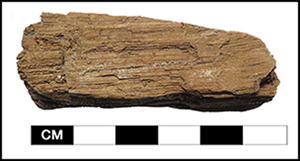Published online by Cambridge University Press: 17 April 2023

The native trees of Greenland are unsuitable for larger construction projects or shipbuilding. Instead, the Norse colonists (AD 985–1450) relied on driftwood and imported timber. The provenance and extent of these imports, however, remain understudied. Here, the author uses microscopic anatomical analyses to determine the taxa and provenance of wood from five Norse Greenlandic sites. The results show that while the needs of most households were met by local woodlands and driftwood, elite farms had access to timber imports from Northern Europe and North America. By demonstrating the range of timber sources used by the Greenland Norse, the results illustrate connectivity across the medieval North Atlantic world.